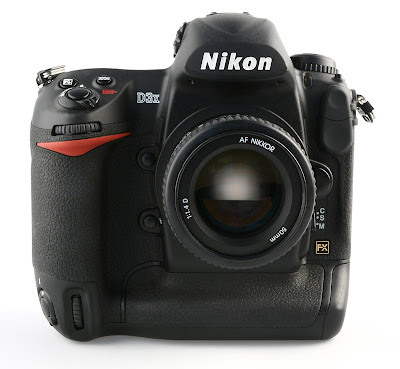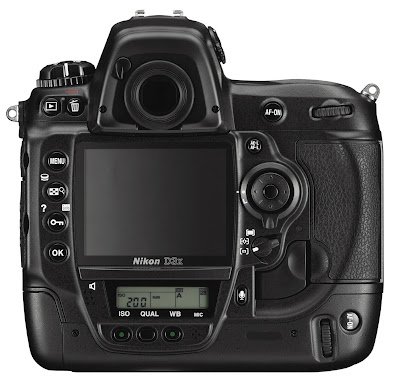Nikon D3x Digital SLR Specification
It's been nearly a year to the day that the Nikon D3 and D300 were shipped and Nikon are now adding to their full frame range with the Nikon D3x making them the first company with an entire compliment of full frame DSLRs.



Nikon D3x: Specification
- Resolution: 24.5Mp
- Sensor size: 35.9x24.0mm
- Sensor type: CMOS FX type
- Image size: 6048x4032
- Focus system: Multi-CAM 3500FX
- Focus points: 51 (inc. 15 cross type sensors)
- Lens mount: Nikkor type G or D
- File type: JPEG, RAW (NEF), TIFF (RGB)
- Sensitivity: ISO100-1600 (ISO50-6400 equivalent)
- Storage: Dual slot UDMA enabled Compactflash
- Focus types: Single point AF, Continuous AF, Focus tracking, Manual with electronic rangefinder
- Metering system: TTL full aperture metering using 1,005px RGB sensor
- Metering types: 3D colour matrix, centre-weighted, spot
- Exposure compensation: /-5EV in 1/2, 1/3 or 1 step increments
- Shutter speed: 30sec-1/8000sec, bulb
- Frames per second: 5fps FX, 7fps DX
- Flash: External only
- Flash metering: TTL flash control
- Flash sync speed: 1/250sec
- Image stabilisation: Lens based
- Integrated cleaning: Image Dust Off reference data
- Live view: Handheld, tripod mode
- Viewfinder: Optical, 100% field of view in FX mode, 97% in DX mode
- Monitor: 3in TFT LCD polysilicon monitor, 920,000dot with brightness adjustment
- Interface: USB2.0
- Power: Li-Ion battery
- Size: 159.5mmx157mmx87.5mm
- Weight: 1220g body only





